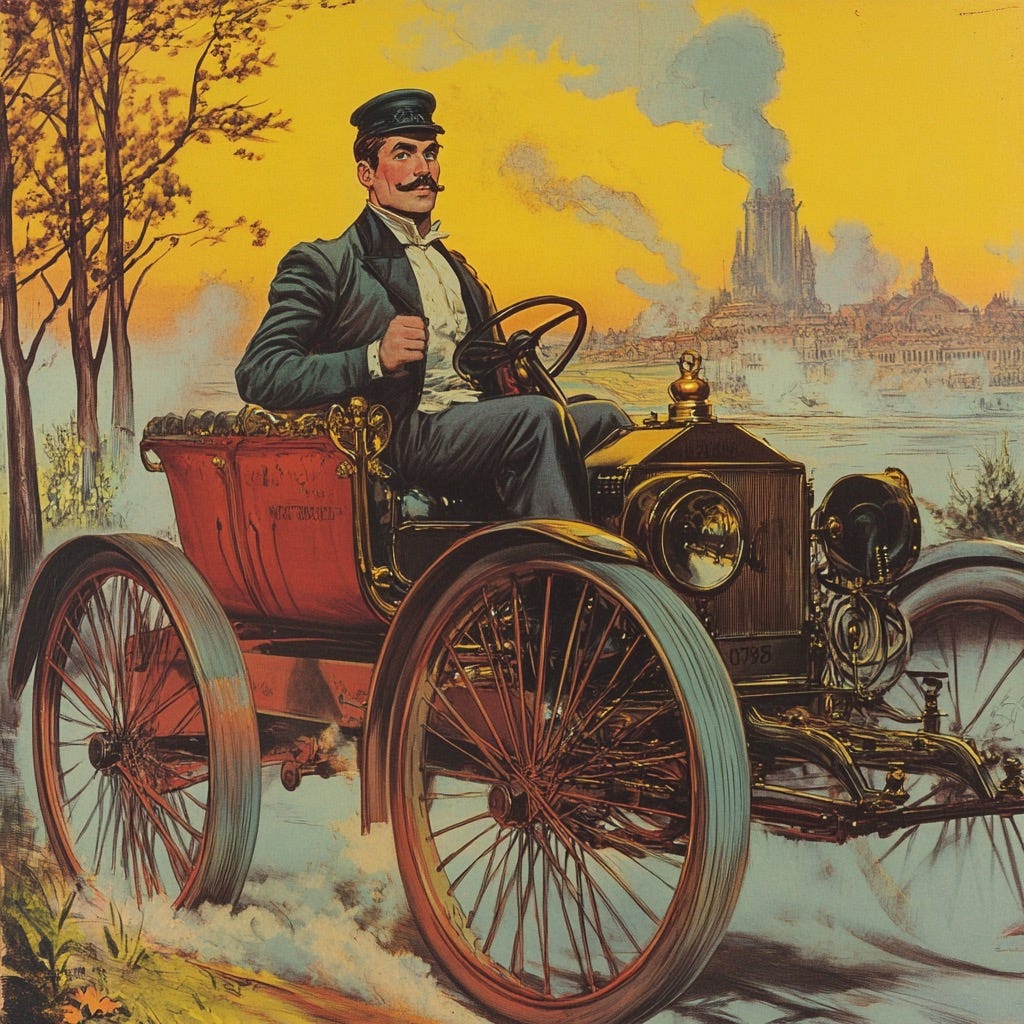The Praxis of Unintended Consequences
Tales of history’s most spectacular plot twists: urban-apocalypse cars, colonizer bees and manifest-destiny wolves.
It's 1885, and Karl Benz is standing next to his Patent-Motorwagen in Mannheim, Germany, probably feeling like he's just hand-delivered the future to humanity. The first automobile: a revolutionary invention that would free us from the limitations of horse and rail. If this were a movie, the camera would slowly zoom out as ominous music starts playing, because we're about to flash forward through the greatest urban destruction montage never filmed.
Cut to the South Bronx, 1977: Entire blocks of abandoned buildings with blown-out windows stare emptily like hollow skull sockets. The air is thick with smoke from yesterday's arson-for-profit fire, while stripped car chassis rust in vacant lots where brownstones once stood proud. This is what winning looks like for the automobile revolution: A once-grand American city carved up by Robert Moses's highways, its neighborhoods left to rot like archaeological ruins someone forgot to rope off. Lead-poisoned children play in the rubble of demolished beaux-arts masterpieces, while the evening news runs another story about this "urban decay" like it's some kind of natural disaster.
Welcome to the unintended consequences speedrun, where one guy’s dream of horseless carriages ended with America's cities looking like they've been blitzkrieged.
We are told we live in revolutionary times, that there is agitation for change. I think believing in revolution is like believing in Santa Claus – it's adorable when you're a child and haven't developed object permanence, but becomes increasingly concerning the closer you get to having a 401k. At some point, you have to graduate from thinking some grand upheaval will solve everything.
Every LinkedIn prophet and Instagram revolutionary is absolutely convinced that what we need right now is More Action, Bigger Changes, and Radical Solutions – preferably with a hefty consulting fee attached.
But maybe what we actually need is less action and more critical thinking. Maybe, before we "move fast and break things," we should consider what exactly we're breaking and whether we'll miss it when it's gone?
Picture American cities in 1900: dense, walkable, connected by streetcars, with beautiful architecture and actual functioning public spaces that weren't just parking lots pretending to be plazas. Then everyone decided to own a private metal box for
Keep reading with a 7-day free trial
Subscribe to THE HEGELIAN DISPATCH to keep reading this post and get 7 days of free access to the full post archives.



